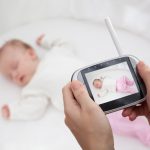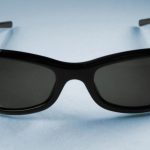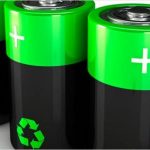
Japanese researchers develop hovering “firefly” light that uses ultrasonic waves to stay afloat
Wednesday, July 04, 2018 by David Williams
http://www.products.news/2018-07-04-japanese-researchers-develop-hovering-firefly-light-that-uses-ultrasonic-waves.html

Fireflies are truly one of the most fascinating creatures out in nature. As such, they have inspired many research studies, particularly those that are aimed at emulating their ability to shine a light from their tiny insect bodies. Now a team of researchers from Japan has managed to create a small electronic light that can “float” in mid-air and could hold many potential uses in the future.
According to reports on the study, researchers from the University of Tokyo were able to develop a small light-emitting particle with an onboard electronic circuit which has the ability to levitate through the use of simple acoustic technology. The invention, called “Luciola” after its resemblance to a certain species of firefly, could be used in creating moving displays or for projection mapping purposes.
The researchers also mentioned that they are expecting to find applications for their invention in the field of the internet of things (IoT), wherein regular objects like household appliances, cars, and even entire homes can be connected to online networks to send and receive certain kinds of data. Although tiny, Luciola can be equipped with electronic sensors that can help it perform a number of different functions.
Luciola weighs only 16.2 milligrams and measures 3.5 millimeters in diameter. It can emit a faint red glimmer that allows it to illuminate text, and uses a total of 285 separate micro speakers that can emit ultrasonic waves to make it float. These sounds are completely inaudible to the human ear, which means it Luciola can operate in complete silence.
According to Makoto Takamiya, a member of the Kawahara Universal Information Network Project which was in charge of developing the device, it took them two years for Luciola to show any real potential, and that they are looking for ways to apply it and its uniquely interesting new technology. “Ultimately, my hope is that such tiny objects will have smartphone capabilities and be built to float about helping us in our everyday lives in smarter ways,” he said. He also added that he hopes they can achieve commercial viability with Luciola in about five to 10 years time.
The researchers noted that Luciola could have perfect applications in the IoT space because of its onboard electronic sensors. By using built-in movement and temperature sensors, it could fly to and from certain IoT devices and do certain tasks like deliver messages or help in the making of moving displays with multiple lights that can detect human presence. The possibilities are practically endless.
Part of what makes Luciola work is the use of a custom microchip with an integrated circuit on it. The researchers stated that in designing this new custom microchip, they devised “a new voltage detector circuit” that allows accurate voltage detection as well as correct output during the start-up, in order to achieve “an intermittent lighting of the LED to increase the maximum distance between the transmitter and the receiver coil.”
Simply by considering the form factor which Luciola comes in, you can probably imagine a few scenarios wherein it could be useful. If for no other purpose it could likely be used just as a pretty little source of lightning that’s easy to transport, easy store, and can be stored quite easily right after you stop using it.
Read innovative new tech in Inventions.news.
Sources include:
Tagged Under: Tags: firefly, future tech, gadgets, innovation, inventions, LED, LED light, Luciola, technology, ultrasonic waves





